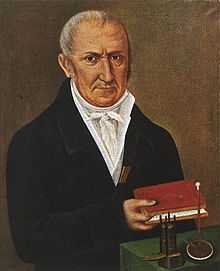Science and technology in Italy

Italy has a long tradition in science and technology, going back to the Renaissance and the Roman era
By the first century AD, Rome had become the biggest and most advanced city in the world. The ancient Romans came up with new technologies to improve the city's sanitation systems, roads, and buildings. They developed a system of aqueducts that piped freshwater into the city, and they built sewers that removed the city's waste. The wealthiest Romans lived in large houses with gardens. Most of the population, however, lived in apartment buildings made of stone, concrete, or limestone. The Romans developed new techniques and used materials such as volcanic soil from Pozzuoli, a village near Naples, to make their cement harder and stronger. This concrete allowed them to build large apartment buildings called insulae.
Italy had a scientific "golden age" during the Renaissance. Leonardo da Vinci, was trained to be a painter, but his interests and achievements spread into an astonishing variety of fields that are now considered scientific specialties. He conceived of ideas vastly ahead of his time. Notably, he invented concepts for the helicopter, an armed fighting vehicle, the use of concentrated solar power, the calculator, a rudimentary theory of plate tectonics, the double hull, and many others, using inspiration from Chinese ideas.[1] In addition, he greatly advanced the fields of knowledge in anatomy, astronomy, civil engineering, optics, and hydrodynamics.
The scientist Galileo Galilei is called the first modern scientist.[2] His work constitutes a significant break from that of Aristotle and medieval philosophers and scientists (who were then referred to as "natural philosophers"). Galileo’s achievements include improvements to the telescope, various astronomical observations, and initial formulation of the first and second laws of motion. Galileo would become known as the founder of modern science.
Other notable figures includes the physicist Enrico Fermi who discovered Fermi–Dirac statistics, described beta decay, established the properties of slow neutrons, and constructed the first atomic pile; the astronomer Giovanni Domenico Cassini, who made many important discoveries about the Solar System; the physicist Alessandro Volta, who invented the electric battery, thus providing for the first time a sustained source of current electricity; the mathematicians Giuseppe Peano, Lagrange, Fibonacci, and Gerolamo Cardano, whose Ars Magna is generally recognized as the first modern treatment on mathematics, made fundamental advances to the field; Marcello Malpighi, a doctor and founder of microscopic anatomy; the biologist Lazzaro Spallanzani, who conducted important research in bodily functions, animal reproduction, and cellular theory; the physician, pathologist, scientist, and Nobel laureate Camillo Golgi, whose many achievements include the discovery of the Golgi apparatus, and his role in paving the way to the acceptance of the Neuron doctrine; Giulio Natta, Nobel prize for the polymerization of plastics; and Guglielmo Marconi, who received the Nobel Prize in Physics for the invention of radio. On September 25, 2001, US Congress passed a resolution that officially recognized the Florentine immigrant to the United States, Antonio Meucci, as the inventor of the telephone.[3]
Federico Faggin, who originally developed the Silicon Gate technology (SGT) in 1968 at Fairchild Semiconductor[4] and designed the world’s first commercial integrated circuit using SGT, the Fairchild 3708, had the correct background to lead the project into what would become the first commercial general purpose microprocessor, since it was his very own invention, SGT in addition to his new methodology for random logic design, that made it possible to implement a single-chip CPU with the proper speed, power dissipation and cost.
References
- ↑ Le macchine di Leonardo da Vinci. macchinedileonardo.com. Web. 29 Sep. 2011.
- ↑ Rowland, Wade. Galileo's mistake: a new look at the epic confrontation between Galileo and the Church. Arcade Publishing, 2003. p. 43. Web. 29 Sep. 2011.
- ↑ Bill Text Versions. 107th Congress (2001-2002). H.RES.269. thomas.loc.gov. Web. 29 Sep. 2011.
- ↑ Faggin, Federico; Klein, Thomas; Vadász, Leslie L. Insulated Gate Field Effect Transistor Integrated Circuits with Silicon Gates. (JPEG image) IEEE Electron Devices Group, 1968. Web. 29 Sep. 2011.
External links
| ||||||||||||||||||||||||||||||||||||||||||||
| ||||||||||||||